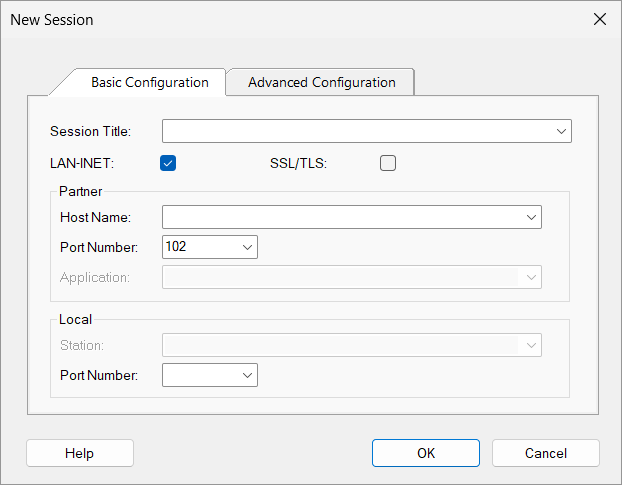Note that when using LAN-INET in Windows, only an outdated version of the transfer protocol can be used. Converting existing LAN-INET sessions to RFC1006 sessions is recommended (see section “Converting a LAN-INET session to an RC1006 session”).
If you activate the LAN-INET option, the appearance of the Basic Configuration tab changes slightly. The fields in the Partner and Local sections have different input options.
As in RFC1006 format, for active sessions you must specify the host name of the host with which you want to communicate. Instead of the host application, under LAN-INET specify the port number generated in the host application. Contact the host system administrator if necessary.
A port number is also entered instead of the terminal in the local configuration of the emulation session under LAN-INET. However, this is not essential for many applications and can be left blank. In this case, the emulation automatically assigns a free port to the session. By contrast, if your host application expects a particular port (e.g. UTM applications or File Transfer) specify this under Local: Port Number.
The input options on the Advanced Configuration tab are the same for LAN-INET as in RFC1006 format (see section “Setting up an active session in RFC1006 format”).

